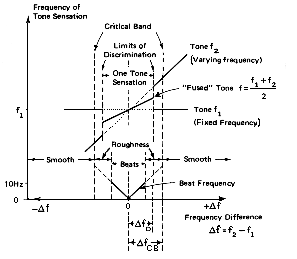The travelling wave on the basilar membrane has been measured, for example, using laser interferometry. Perhaps they don't agree that what is observed is a travelling wave, but they don't go into detail responding to that data.
They barely comment on active vs. passive processes in hearing, or the role of motility in outer hair cells (besides criticizing some of the explanations), which is a unique anatomical feature of the hearing system vs. other senses. Frequency selectivity depends on it. They mention the muscles in the middle ear as the real cause of amplification, but don't go into detail. This, despite the main lit stating that the function is inhibitory.
Their explanation for the perception of infrasound doesn't fit experimental data. Below 15Hz tone perception collapses. Below 10Hz subjects detected individual pressure maxima but not the cycle. The lower limit of hearing does not have a distinct threshold. I had put together this chart previously:
Overall, I'd agree that the foundational experiments for ear mechanics should be questioned. This is in part because it's been impossible to make measurements on living humans, and the measurements made on animals, especially the intrusive measurements in vivo, damage the very organ they are supposed to be studying. Same criticism goes for using knockout animals to stunt the development of certain anatomy or functions as a sort of negative proof of role.
Definitely lots more work to be done for hearing science in general, and these two authors in particular.



